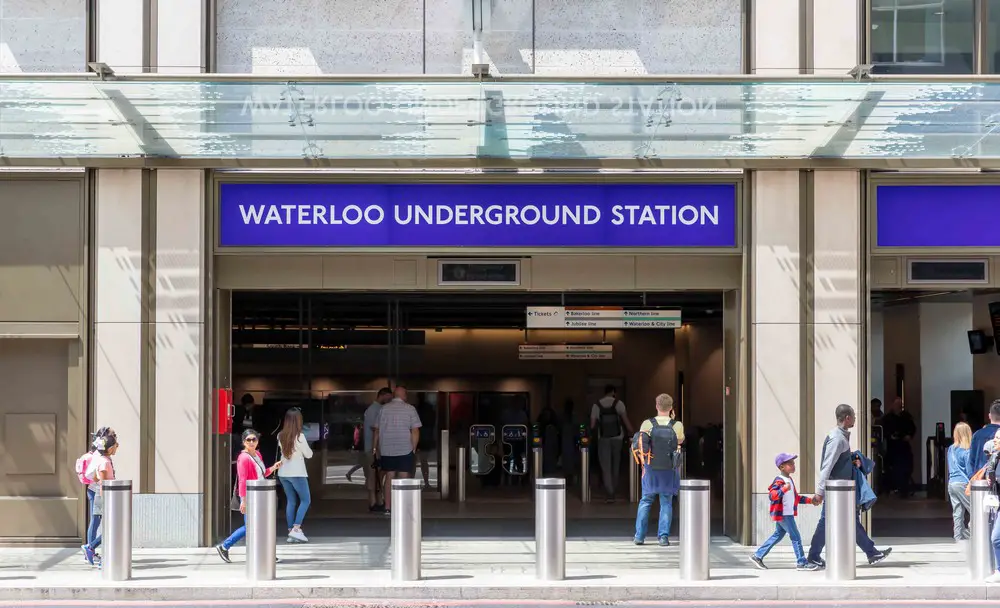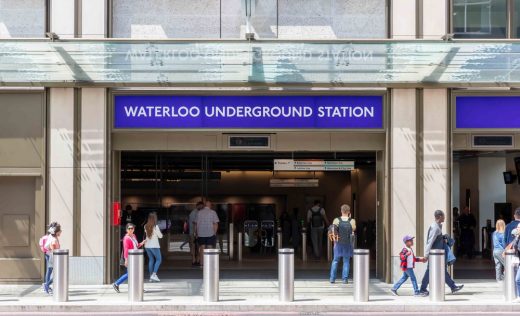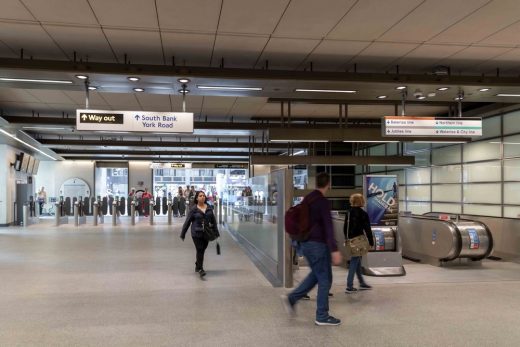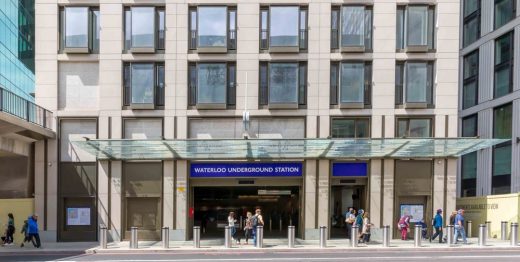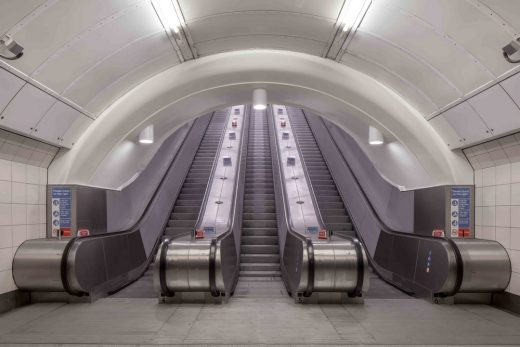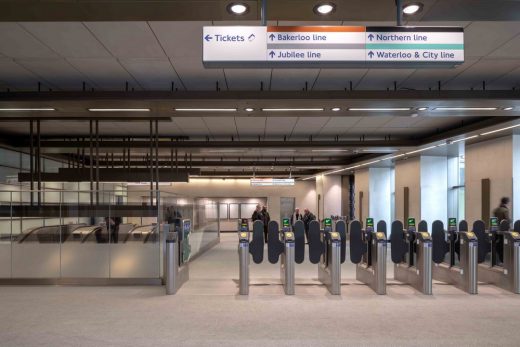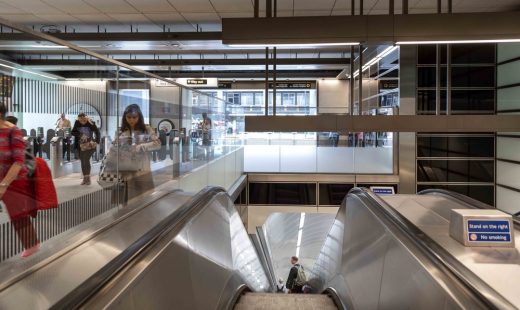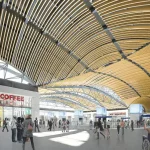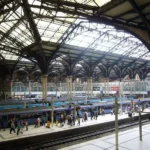Waterloo Station York Road Ticket Hall Photos, London Railway Building, English Architecture
Waterloo Station York Road Ticket Hall in London
SE1 Underground Building Interior, England, UK – design by Patel Taylor Architects
9 Jun 2019
Waterloo Station York Road Ticket Hall
Architects: Patel Taylor
Location: Waterloo Station – 8-13 Casson Square / Southbank Place development, London, SE1 8SW
New look London Underground Waterloo Station York Road Ticket Hall opens to the public
Designed by Patel Taylor, the replacement London Underground Waterloo Station York Road Ticket Hall, part of Canary Wharf Group and Qatari Diar’s Southbank Place development, opens to the public. Occupying the lower levels of 8-13 Casson Square, Patel Taylor’s 32-storey mixed-use building at the gateway to Southbank Place, the Waterloo Station ticket hall provides a public transport hub which serves the development’s offices, homes, and retail spaces – and will help to establish new pedestrian routes that better connect Waterloo Underground Station to the River Thames.
Founding Director of Patel Taylor, Pankaj Patel, says, “The opening of the new ticket hall marks an important milestone for Southbank Place, but it is also part of a bigger picture relating to London’s regeneration. The original ticket hall was built to serve the 1951 Festival of Britain. Since 1962, the site was home to the historic Shell Centre; an imposing block that restricted public access to the waterfront. The new ticket hall is a key piece of infrastructure that unlocks an inaccessible part of the riverside and connects it to the Southbank and Waterloo; reinstating this stretch of the Thames for people to enjoy, while extending the Southbank experience into the once fragmented and impenetrable area around Waterloo Station. The ticket hall at Southbank Place unifies these areas on a journey to become one of London’s liveliest emerging neighbourhoods.”
Meeting operational demands and projected footfall, the ticket hall builds future resilience for London Underground by upgrading capacity and efficiency. Unlike its predecessor, the ticket hall expresses a strong branded presence on York Road, doubling the size of the previous facility to improve public access to the underground station network and the Southbank.
Occupying 55% of 8-13 Casson Square’s building footprint and located over three levels, the ticket hall presented complex technical challenges relating to the site and integration within the mixed-use building above. Through intelligent spatial arrangement, a generously proportioned space was achieved through the engineering of a transfer level above the ticket hall. This comprises a series of 20-metre-long and 2.5-metre-high bridge beams that span the hall to enable a column-free space beneath for effective pedestrian traffic flow.
The design reconciles the alignment of the original 1950s escalator barrel with the east-west orientation of the Southbank Place masterplan, enabling three modern-day escalators to be fitted within the original 1950s escalator barrel. Careful consideration was given to the layout of the lower ground floor level and the skilled integration of the ticket hall’s plant, machinery and service requirements to create a highly efficient facility.
In addition to providing a public transportation service, the ticket hall is also a workplace. A mezzanine level provides administrative, breakout and kitchen spaces to support London Underground staff in their day-to-day jobs. Streamlining pedestrian flows, incorporating passenger and staff interface requirements alongside retail, ATM, security, services, power supplies and back-up were addressed through precise spatial design, determined through behavioural analysis.
The aim was to create a timeless and efficient space. Lighting plays an important role in creating a calming and open environment. Incorporating both natural and artificial sources, lighting enhances passenger wayfinding and provides accents at ticket machines and other service points. Extending the elegance of the building that is currently under construction above, the same palette of Portland stone and bronze metal accents have been selected for the ticket hall. Generous bay windows articulate the north side of the ticket hall, drawing in ample amounts of daylight to reduce energy costs and minimise carbon footprint. A pre-cast concrete soffit, glass balustrade and a glazed feature wall, designed to subtly aid wayfinding, contribute to the clean, crisp aesthetic.
About Patel Taylor
Patel Taylor is a London-based architecture, landscape and urban design practice led by Pankaj Patel and Andrew Taylor. Founded in 1989, their portfolio ranges from city to human scale and includes cultural, education, residential, commercial and mixed-use buildings alongside masterplanning and public realm design. The practice is currently working on some of the largest urban land transformations in the UK, including White City Living, London Dock, Beam Park and Stephenson Street. Other infrastructure projects include Canary Wharf footbridge, elements of White City Living, Stephenson Street and Beam Park masterplans, as well as outline studies for four London Underground stations as part of the Old Kent Road Area Action Plan.
Photography © Peter Cook
Waterloo Station York Road Ticket Hall in London Images / Information received 090619
Waterloo International Station Building
Design: Nicholas Grimshaw and Partners
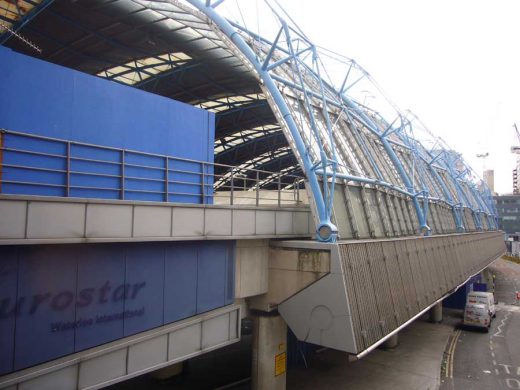
photograph © Adrian Welch
Waterloo Station London
Location: Waterloo Station, London, SE1 8SW, UK
Railway Station Building Designs
New London Architecture
Contemporary London Architectural Projects
London Architecture Designs – chronological list
London Architecture Walking Tours
Waterloo Buildings
South Bank Imax near Waterloo Station
One Pear Place Waterloo Building
Waterloo City Square Competition
London Railway Station Buildings
London Bridge Station Building Redevelopment
Design by Grimshaw / tp bennett architects
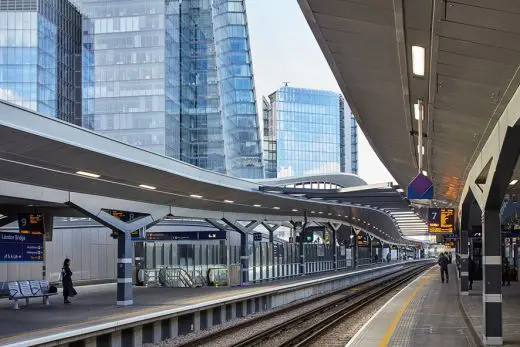
photo : Paul Raferty
London Bridge Station Redevelopment
Comments / photos for the Waterloo Station York Road Ticket Hall in London page welcome

